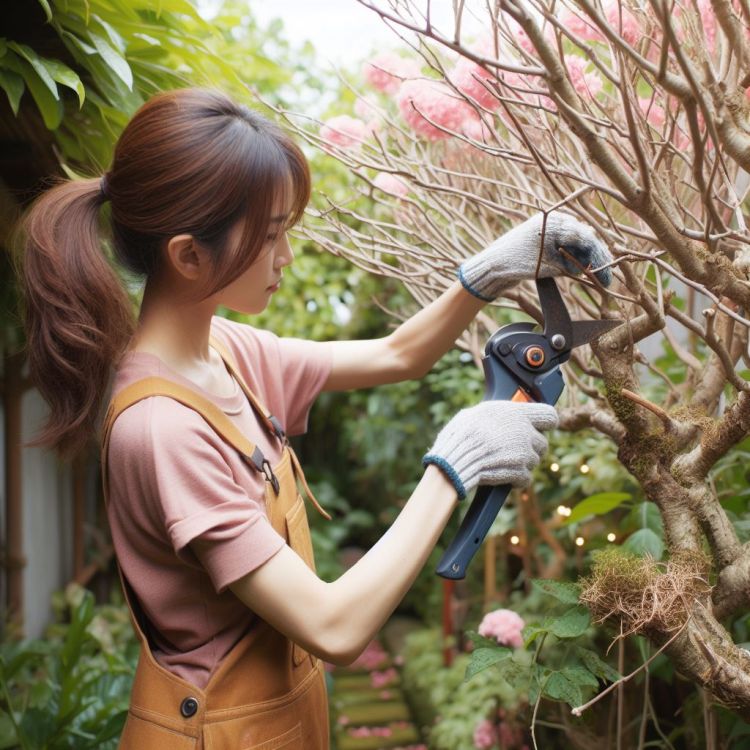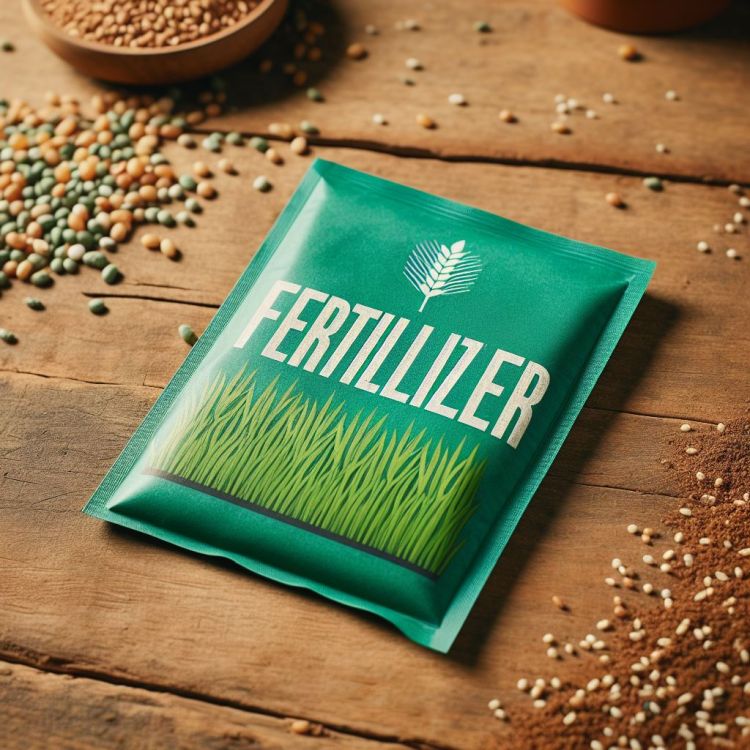Last updated on March 8th, 2024 at 05:28 am
In our area, where winter blankets the outdoor world in snow from November to March, the indoor plants that bring life to our homes can start looking a bit sad after months of cold weather. But don’t worry! You don’t have to be an expert to help them bounce back. It’s entirely possible to Revive Plants After Winter.
Winter can be tough on outdoor gardens too. Snow, freezing temperatures, and unpredictable weather can leave our plants looking worse for wear come springtime. But don’t lose hope! With a little care, they can recover. Remember, you can always Revive Your Plants After Winter.
Plants are tough, they can bounce back from a lot. So even if your garden looks a bit worse for wear after winter, don’t give up. With patience and some TLC, they’ll soon be thriving again. It’s all about knowing how to Revive Your Plants After Winter. Here’s a comprehensive guide on how to revive plants after winter.
Contents
- 1 How To Revive Plants After Winter?
- 2 FAQs
- 3 Reviving Your Garden
- 4 Author
How To Revive Plants After Winter?

Before diving into any revival efforts, take the time to assess the condition of plants. Look for signs of damage such as frostburn, wilted leaves, or broken branches. Not all plants will have survived the winter unscathed, but don’t despair. Many resilient species can bounce back with the right care.
Dealing with Frost Heave
Frost Heave is a common occurrence in regions with freezing temperatures during the winter months, making it essential to revive plants after winter. It presents itself as perennials, shrubs, or young trees being displaced, visibly rising above the ground.
This phenomenon is caused by the cycle of freezing and thawing, which exerts pressure on the soil, causing it to expand and contract and pushing the plants upward. Shallow-rooted plants such as heuchera, Shasta daisies, and small shrubs are particularly vulnerable to Frost Heave, especially if they were planted late in the fall without sufficient time to establish sturdy root systems.
Mitigating the Damage:
If you notice Frost Heave affecting your plants, there are steps you can take to mitigate the damage and help them recover.
Assessment
Carefully assess the condition of the plant. If it still retains some soil around its roots, you can attempt to press it back into the ground for replanting gently. However, if the top or crown of the plant has separated from the roots, it may not survive.
Preventive Measures
To prevent Frost Heave in the future, consider planting shallow-rooted plants earlier in the fall to allow them ample time to
Mulching
Additionally, providing a layer of mulch around the base of your plants can help regulate soil temperature and minimize the effects of freezing and thawing cycles.
Pruning and Trimming

To kickstart the revival of plants after winter, begin by pruning away any dead or damaged branches. This crucial step not only enhances the plant’s appearance but also stimulates new growth.
Pruning Techniques
Utilize sharp, clean pruners to make precise cuts, ensuring the plant’s overall health. You can promote optimal growth and vigor in your plants by employing proper pruning techniques.
Removing Wilted or Yellowing Leaves
In addition to pruning branches, it’s essential to remove any wilted or yellowing leaves. These leaves can harbor disease and hinder growth. By eliminating them, you create a healthier environment for your plants to thrive.
Encouraging Growth
Through meticulous pruning and trimming, you encourage the emergence of new growth, revitalizing your plants and preparing them for a vibrant spring season.
Providing Adequate Water

Winter conditions can vary significantly depending on your geographical location. However, in many regions, dry air and reduced precipitation are common occurrences during the colder months, making it crucial to revive plants after winter.
Addressing Hydration Needs
As a result of these conditions, your plants may become dehydrated and in need of water. It’s essential to address their hydration needs to facilitate their recovery after winter.
Deep Watering Technique
Give your garden a deep watering session, ensuring the soil is thoroughly moistened. Deep watering encourages roots to grow deeper into the soil, promoting overall plant health and resilience.
Avoiding Overwatering
However, exercise caution to avoid overwatering, as excessively wet soil can lead to root rot and other issues. Strike a balance by providing adequate hydration without saturating the soil.
Managing Winter Burn
Winter Burn presents as browning foliage, affecting either the tips or entire branches of both broadleaf and needled evergreens. This common occurrence is observed in various plants, including rhododendrons, yews, hollies, and boxwoods, emphasizing the importance of knowing how to revive plants after winter.
Understanding the Issue
During winter, evergreens undergo transpiration, releasing moisture through their foliage. However, they struggle to replenish this lost water due to frozen soil, leading to heightened vulnerability. Plants exposed to afternoon sun and windy conditions suffer the most as water evaporates faster than it can be absorbed.
Implementing Solutions
Dealing with Winter Burn often requires patience. In some instances, new growth may emerge and replace dead tips by late spring, especially in trees like pines and spruces. For other evergreens such as boxwoods, pruning away dead parts and monitoring their recovery is advisable. Fast-growing shrubs typically bounce back within one or two seasons.
Knowing When to Say Goodbye
In severe cases where the entire plant or a substantial portion of it is brown and crispy, removal may be necessary. According to Schmitz, extensive damage warrants the removal of the plant altogether.
Revive Plants After Winter By Managing Salt Injury
Salt injury exhibits a similar appearance to winter burn, with damage evident on the side of the plant facing a roadway where salt is used for snow and ice clearing. Additionally, affected foliage may display a bleached appearance.
Understanding the Cause
The accumulation of salt spray from passing cars on woody plants and evergreens leads to desiccation, resulting in foliage damage. This damage can manifest as a brown or bleached appearance, along with potential issues such as bud damage, delayed blooms, reduced or distorted leaf and stem growth, and decreased leaf density.
Implementing Solutions
Regrettably, there are limited options once salt injury has occurred. While some plants may recover from mild damage, heavily affected ones might require replacement with more salt-tolerant varieties. Seek guidance from your local cooperative extension service to identify salt-tolerant plants suitable for your area.
Addressing Flattened Shrubs
The aftermath of heavy snow and ice storms is often evident in the appearance of flattened shrubs, which bear the weight of the elements, resulting in their collapse.
Understanding the Underlying Issues
Plants have their limits when it comes to supporting heavy loads, and with the repeated onslaught of heavy snow during winter, some shrubs may succumb to the pressure. Particularly vulnerable are round shrubs like certain types of arborvitae. Frost cracks, caused by the burden of snow and ice, can also contribute to hidden injuries that may only become apparent in the following spring or summer, underscoring the importance of knowing how to revive plants after winter.
Implementing Strategies
While many shrubs, including lilacs, paniculata hydrangeas, and ninebark, can often bounce back and regain vitality by summer, the story may differ for evergreens or shrubs with large sections broken and requiring removal. In such cases, there might be challenges in achieving full recovery. Depending on personal tolerance for waiting and the prominence of the damaged area, replacing severely affected shrubs, especially those in noticeable locations like the front of your house, may be a prudent decision.
Strategic Fertilization

Following a prolonged winter, your plants may require a nutrient boost to stimulate growth and vitality.
Applying Balanced Fertilizer
To replenish essential nutrients and foster healthy development, apply a balanced fertilizer. Select a fertilizer tailored to the needs of your specific plant types, whether they are flowering, fruiting, or foliage plants, as part of your strategy to revive plants after winter.
Choosing the Right Product
Opt for a fertilizer formulation designed to address the specific requirements of your plants. Whether you have flowering plants that need a boost for blooming or fruiting plants that require extra nutrients for robust yield, selecting the appropriate fertilizer is key.
Following Instructions Closely
Adhere to the instructions provided on the fertilizer packaging diligently. Over-fertilizing can have detrimental effects on your plants, potentially causing damage rather than promoting growth, which can hinder your efforts to revive plants after winter.
Nourishing Without Overfeeding
Plants thrive on more than just water and sunlight; they require proper nourishment to reach their full potential.
Timing of Fertilization
While opinions vary on the ideal winter feeding regimen, a widely effective practice is to fertilize between Easter and Thanksgiving. This approach aligns with the natural dormancy period of plants during winter, discouraging excessive growth stimulation through fertilization.
Selecting the Right Fertilizer
When choosing a fertilizer, opt for an all-purpose plant food that caters to the diverse nutritional needs of most plant varieties. This versatile option ensures comprehensive nourishment without the risk of overfeeding.
Preventing Overfeeding
While feeding your plants is vital, it’s crucial to avoid overdoing it, especially during winter dormancy. Excessive fertilization can disrupt the delicate balance of nutrients and potentially harm plant health.
FAQs
When is the best time to revive plants after winter?
It’s best to begin reviving your plants after the last frost date in your area. Typically, this falls around Easter, providing a suitable starting point for spring rejuvenation.
Is it possible to revive indoor plants after winter as well?
Yes, indoor plants can also suffer from winter-related issues such as dry air, reduced sunlight, and temperature fluctuations. Providing proper care, including watering, pruning, and repotting if necessary, can help indoor plants recover and thrive after winter.
Can all plants be revived after winter?
While many resilient plant species can bounce back with proper care, severe damage or extensive loss of foliage may hinder full recovery. However, proactive measures and patience can significantly improve the chances of revival.
Is it necessary to fertilize my plants after winter?
Fertilization can be beneficial for promoting new growth and replenishing nutrients lost during winter. However, it’s essential to avoid over-fertilizing, especially during the early stages of plant revival.
How can I protect my plants from deer damage during winter?
Implementing deterrents such as fencing, and repellents, or selecting deer-resistant plant species can help mitigate the risk of deer damage during winter months.
Reviving Your Garden
The process of reviving plants after winter is a vital aspect of gardening that ensures the health and vitality of your garden for the upcoming season. By addressing common winter-related issues such as frost heave, winter burn, salt injury, and flattened shrubs through proper care and intervention, you can help your plants bounce back and thrive. Remember to assess the condition of your plants, implement preventive measures, and provide essential care such as pruning, watering, and fertilization to support their revival. With patience, diligence, and the right strategies, you can successfully revive plants after winter, creating a lush and vibrant garden to enjoy throughout the year.

